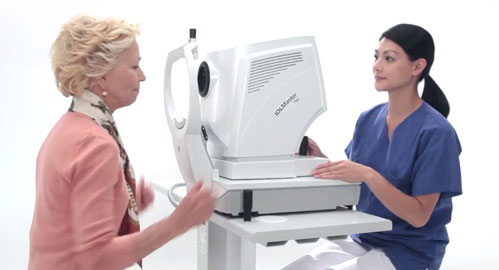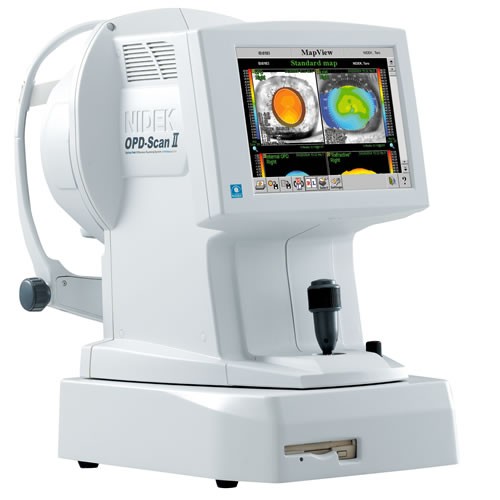Cataract Surgery Overview
Cataract Surgery
A cataract is a clouding of the lens of the eye; cataract surgery is performed to improve vision by replacing the clouded lens with an artificial one. Cataracts affect millions of people in the United States each year. Most cataracts are the result of aging, though some form as a result of genetic factors, disease or injury. Cataract surgery is common, and considered safe and effective.
Reasons For Cataract Surgery
Cataracts can cause blurry vision, and increase the glare from lights. In their early stages, cataracts usually are not troublesome but, as they thicken and mature, surgery to remove them may be required. Typically, surgery is needed because cataracts are interfering with everyday activities, or the treatment of another eye problem. Oftentimes, cataract surgery is done when vision declines to a point where it is not adequate enough to pass the visual acuity test for obtaining or renewing a driver’s license.
Candidates For Cataract Surgery
Cataracts caused by aging develop gradually, and patients may not notice the early vision changes they cause. It is only when their cataracts start interfering with vision that patients may become aware of them. An ophthalmologic examination will detect cataracts, and rule out other causes for vision issues, such as glaucoma or macular degeneration. Patients who become aware of visual difficulties related to cataracts usually experience, especially at night, clouded, blurred or dim vision.
Benefits Of Cataract Surgery
Cataract surgery’s benefits are many, greatly enhancing the quality of life. They include the following:
- Improved quality of vision (sharper images, brighter colors)
- Less difficulty with routine tasks (particularly night driving)
- An opportunity to decrease dependency on eyeglasses
- Greater independence, regardless of age or disability
- Greater safety
Research indicates that the improved vision provided by cataract surgery reduces the risk of falls, making exercise, sports and hobbies safer. This, combined with the improved ability to read, recognize faces, and perform everyday activities with greater ease, results in improved physical health, increased sociability and longer life expectancy. Studies have also shown that patients with dementia can improve cognition after surgery when vision is significantly improved.
Diagnostic Tests for Cataract Surgery

In addition to a full exam by your doctor, there are other tests or measurements done to prepare for cataract surgery.
The Zeiss IOL Master® 700 is a high-precision measurement tool that is used to measure the axis length, corneal curvature and the anterior chamber depth of the eye. The measurements obtained provide physicians with the information needed in the selection of the right IOL to be used for the patient undergoing cataract surgery. The IOL Master does not come in contact with the patient’s eye so there is no need for anesthetic eye drops.

The Cataract Surgery Procedure
After the pupil is dilated, and the area in and around the eye is numbed with anesthesia, a tiny incision is made to insert an ultrasonic probe. The probe emulsifies (breaks up) the cloudy lens into tiny pieces that are then aspirated out of the eye. Once the cloudy lens has been removed, an artificial lens is implanted.
The new lens, known as an intraocular lens (IOL), is often inserted through the original incision. Some varieties of IOLs serve multiple purposes, such as blocking ultraviolet light or working as bifocals. In most cases, sutures are not needed.
Surgery is performed on an outpatient basis at our surgery center, takes only 10 to 15 minutes or less, and is relatively painless. A very high percentage of patients demonstrate improved vision after the procedure.
Risks Of Cataract Surgery
Although cataract surgery is a common procedure and considered quite safe, any surgery poses risks. In the case of cataract surgery, there is a slightly increased risk of retinal detachment, a painless but dangerous condition. Other risks of cataract surgery include bleeding and infection. The risk of complications after cataract surgery is greater if the patient has another eye disease or any serious medical condition. Danger signs of complications after cataract surgery include increased pain in or redness of the eye, light flashes or floaters, diminished vision, nausea, vomiting or intense coughing.
Recovery From Cataract Surgery
Immediately after surgery, an eye patch or shield is worn; some doctors advise wearing a protective shield, even when sleeping, for several days. Vision may be blurry at first, but improves within a few days. Some itching and discomfort are also present for a few days, but it is important that a patient not rub or exert pressure on the treated eye. Heavy lifting should be avoided. Eye drops to prevent inflammation and infection are prescribed.
Even though full healing can take up to 2 months, because cataract surgery is performed on one eye at a time, daily activities can be resumed in a few days. Most patients need to wear eyeglasses, for at least some tasks, after surgery, depending on the IOL that is chosen. If the other eye also has a cataract, which is often the case, the second surgery is typically scheduled about 2 weeks after the first.
Laser Assisted Cataract Surgery
The LenSx® Laser from Alcon is the first femtosecond laser to receive FDA approval for use in cataract surgery.
The LenSx Laser offers three-dimensional, high resolution images that map the unique eyes of each patient. These images, combined with the computer-captured measurements and information about the eyes, allow the surgeon to achieve greater accuracy, precision and customization than ever before.
The LenSx Laser is optimized with true image guidance, helping the surgeon determine the best location and dimensions for incisions. The bladeless femtosecond laser pulses to create incisions in the lens capsule, crystalline lens and cornea with a high level of accuracy. The LenSx Laser is an effective technological advancement that ensures the highest level of precision throughout every step of the cataract surgical procedure.
Laser cataract surgery with a femtosecond laser device is the latest advancement in cataract surgery technique. Glens Falls Eye Associates obtained access to the LenSx Laser in 2016 at the New York Eye Surgical Center, and we have been thrilled with what it can do.
ORA-Guided Cataract Surgery
Intraoperative wavefront aberrometry technology, when performed with the ORA (Optiwave Refractive Analysis) device, allows the surgeon to best predict the proper IOL power to match the refractive state of a patient’s eye. During surgery, the ORA takes a measurement of the eye after the cataract is removed, but prior to IOL placement. This prevents the cataract itself from interfering with measurements of the eye. In a matter of seconds, the device captures 40 measurements of the eye and then analyzes the data to determine the optimal IOL power. This allows the surgeon to achieve the most accurate refractive state possible to minimize dependency on glasses after surgery. It is particularly helpful in patients who have had prior refractive procedures such as LASIK or PRK, who have astigmatism, or who have more significant hyperopia or myopia. The ORA is generally beneficial to anyone who wants to maximize the potential of the IOL that is chosen.
